Naturalist, illustrator, and shorebird researcher Josmar Márquez, who has just produced an online graphic novel “Sami The Snowy Plover: Stories of Survival” shares some encouraging news from the offshore islands and cays of his native Venezuela. His research and field work on Coche Island and Margarita Island for AveZona was supported by BirdsCaribbean through the David S. Lee Fund for Conservation.
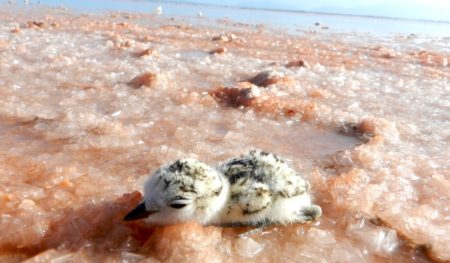
The Snowy Plover is a special bird, in so many ways. Known in Venezuela as Frailecito it runs across the sand, pauses, and quickly catches its food (flies are its favorite) from the surface. Listed as Near Threatened on the IUCN Red List, its population is decreasing. It needs our protection! Let’s take care and share the beach, which is home to these and other shorebirds. Many have migrated long distances, and others use the beach as a breeding area. The Snowy Plovers breed from January to March on these islands. They build their nests by making a small depression in the sand, where they lay three to four eggs. The pair take turns incubating the eggs.
AveZona’s work in monitoring the Snowy Plover population began on Coche Island in 2018. During this year and into 2019, we were able to establish a positive relationship with people in the community. This has helped us to continue periodic counts of this wonderful species in the Saltpans of San Pedro de Coche, despite the restrictions of the Covid-19 pandemic. All the results of these years of research will be published shortly in The Journal Caribbean Ornithology.
Working under tough conditions…
Coche Island resident, Sabino Rafael Silva, was a major supporter of this project. Due to the travel limitations during the pandemic, when others were not able to visit the island, he was the one who spent many hours walking under the burning sun and extreme conditions on the salt flats. He managed to observe and count the population of Snowy Plovers, and also observe other species of shorebirds in this study area. In other areas of the Isla de Coche, he also observed species not previously reported for the island and for this region of Venezuela.
Additional important members of the team were Anahy Marcano, Guilberto Figueroa, Carlos Amundarain and Zenaida Martinez. They are “Margariteños” who were able to record the Snowy Plover on several occasions in the Marites Lagoon Natural Monument, a protected area on Margarita island, near Coche Island. These observations were made in conjunction with the Caribbean Flamingo Monitoring Project.
…and involving local residents through volunteerism
Just like Sabino, Anahy, Guilberto, Carlos and Zenaida are volunteers and friends of AveZona who have carried out valuable work on Coche and Margarita Islands. This is a growing group of community members who are now paying greater attention to their birds and the conservation of the islands’ biodiversity. This is an example of “participatory science,” engaging local communities in a conservation project.
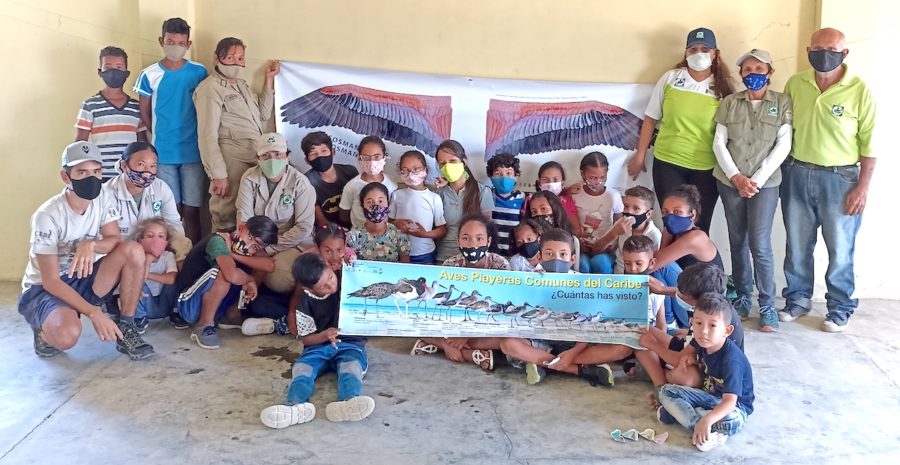
AveZona’s programs offer a great learning and bonding opportunity for children, youth and adults in the island region of Venezuela, establishing a sincere and respectful relationship with local communities. These groups will be able to observe, share information, and protect the birds and biodiversity of the islands of Venezuela.
The Snowy Plover, traveling between islands
One of these seven “Frailecito,” tagged with the black band, which can be read from a distance, is individual 6A, banded on Coche Island in February 2020 by Josmar Márquez and Antonio Ros.
6A has since been observed and photographed three times on Margarita island, flying 14 km one way and 14 km back, over the Caribbean Sea. This tagged Snowy Plover has shown us that the plovers that breed in the salt flats of Coche Island may travel between nearby islands and possibly to the coast of mainland Venezuela.
It is possible that all the populations on the Island of Coche are closely related to those observed in the Marites Lagoon Natural Monument and other areas of Margarita Island. We estimated there were 96 (95% CI: 46-201) and 116 (95% CI = 61-220) Snowy Plovers in the Coche Island salt flats in February and December, respectively.
As shown in the table, several of the individuals were seen frequently in the Coche Island salt pan, while others have not been seen since the day of banding. This raises several questions about the survival rates, migration, or dispersal of many of the individuals. As explained above, a population of 96-116 individuals is estimated in the Coche Island salt flats, thus, it may not be possible to observe all the banded individuals.
We hope to hear soon from some individual birds, such as the 4A, 5A, 6A, and 7A that have not been resighted often or at all. We wish 6A the best of luck in his travels to Margarita Island. Perhaps 6A may decide to settle on this Island. In the future, we hope to be able to use other monitoring methods such as Motus nanotags in this population and in the entire population of Snowy Plovers on different islands of Venezuela.
Exciting news! Two new protected areas on Coche Island may shelter shorebirds
A great victory for the shorebirds of the island of Coche is the recent creation of the first two areas protecting the biodiversity of this island. Under Official Decree No. 4,550, a Reserve of Wild Fauna was declared for Bahía El Saco, with an area of Four hundred and Eighty-Nine hectares (489 ha).
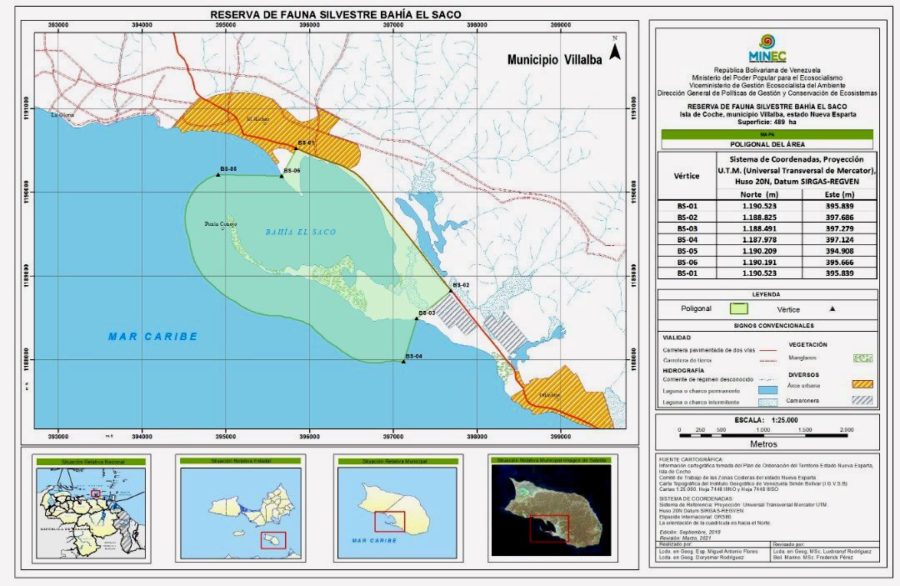
Under Official Decree No. 4,551, a Reserve of Wild Fauna in Punta El Palo was declared, with an area of Two thousand Nine Hundred Sixteen hectares (2,916 ha). These two areas are of utmost importance for the population of shorebirds and seabirds on the island of Coche.
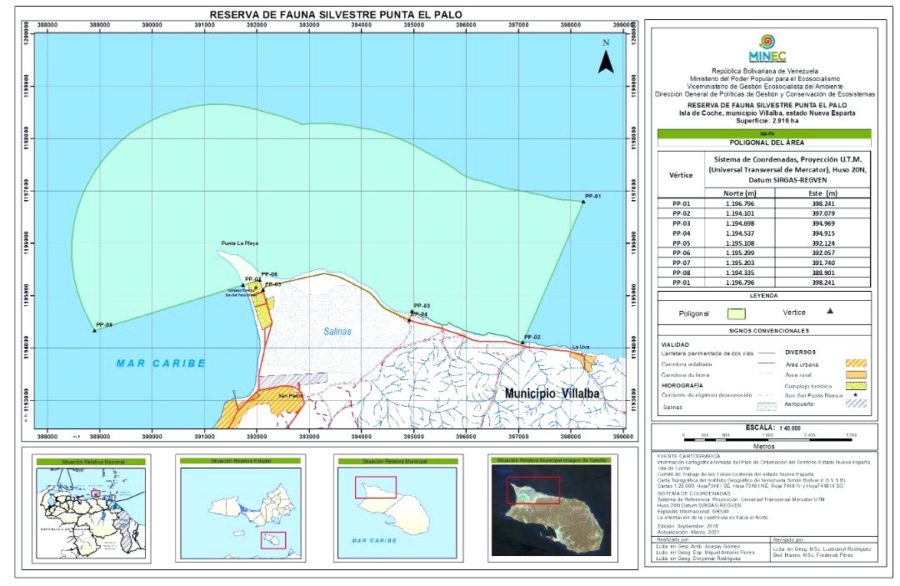
If you spot any of these Snowy Plovers or other shorebirds banded with black flags and white code, please report it to www.paave.net (website of the Bird Banding Program in Venezuela) or at https://www.pwrc.usgs.gov/BBL/bblretrv/
Acknowledgments: I greatly appreciate support from IDEA WILD for providing equipment for the execution of this project, and to the David S. Lee Fund for the Conservation of Caribbean Birds for funding for the field work.
Josmar Esteban Marquez, from AveZona, has lead bird monitoring projects on Coche Island in Venezuela since 2018. In addition to data collection, his work involves mentoring young conservationists, creating artwork to educate about birds, and promoting nature-friendly behavior changes in the local community of the island.





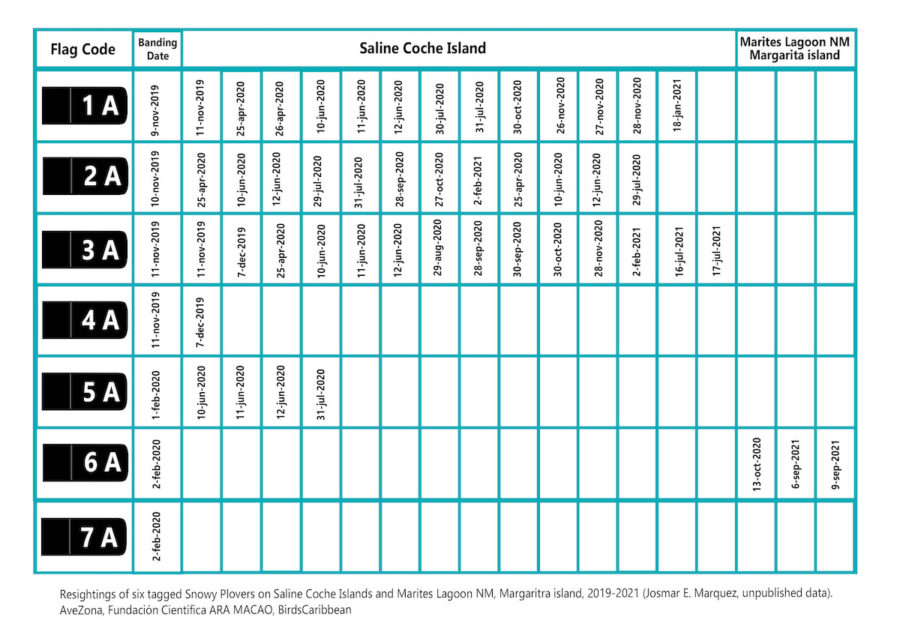



One comment
Comments are closed.